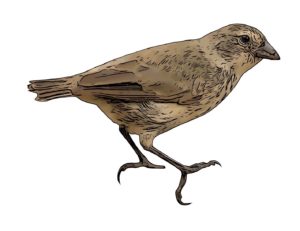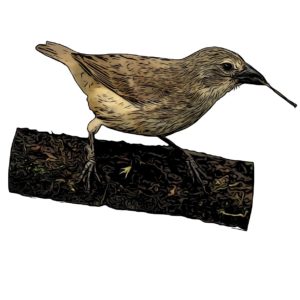Identification
Seperated from larger Woodpecker Finch by darker plumage, streaked underparts and smaller bill.
Description
Male is overall nondescript grey brown with darker upperparts and lighter, streaked underparts. Non-breeding males have a pale lower mandible while breeding males have an overall black bill. Older males may aquire a dark hood, consequently resembling the appearance of a male tree-finch. Females are similar to males, but do not aquire a dark hood and have faded orange bills year round.
Galapagos Distribution
Only found at Playa Tortuga Negra and Caleta Black on NW Isabela.
Global Distribution
Endemic to the Galapagos.
Status in the Galapagos
Rare, extremely localised endemic resident.
Conservation
With a total population of roughly 100 individuals, this is the Galapagos’s rarest endemic. As a result of this tiny population and a natural range of only 1km2 , it is ranked as critically endengered. Although it has never been common, predation by back rats is thought to have greatly reduced this species population with other introduced species such as Smooth-billed Ani and feral cats also playing a roll. Today the most severe threat comes from from the parasitic botfly which lays its eggs in finch nests and whos larvae feed on young chicks. There is an extensive program to save this species from extinction and to relocate it to historically occupied sites. This being said, the finch appears to be particularly picky about wich types of mangroves it inhabits – there must be extensive leaf litter, tall trees and a low canopy. Another challenge is the species low genetic variability due to inbreeding resulting from population bottlenecks – in 2007 for example, the total population was estimated at roughly 40 individuals split roughly equally between to seperate locations. Like other range restricted species, the Mangrove Finch is particularly vulnerable to stochastic events.


